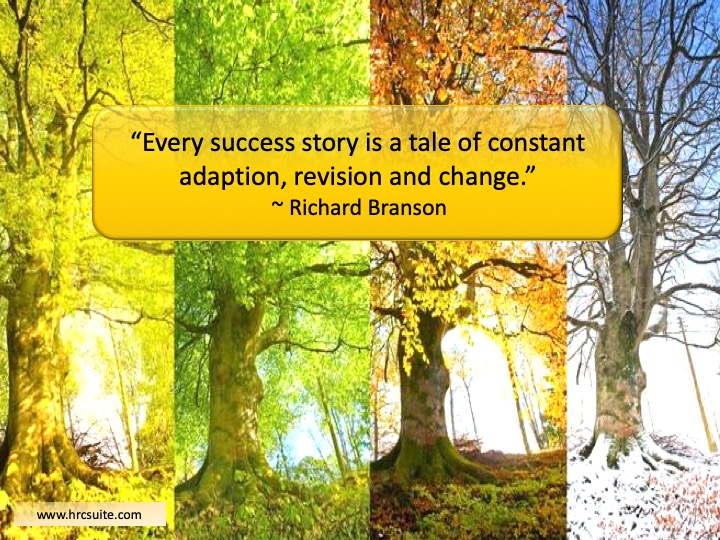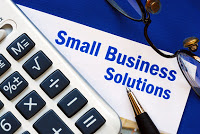Nature has a way to remind us that constant change is a fact. Autumn brings about cold air, reports of snow, and changing trees. We shift from enjoying cold beverage on the porch to warm pumpkin lattes and the sound of a cracking fireplace in the background. For some it includes listening to holiday music already…you know who you are!
There is constant change in the market, regulatory, technology, population demographics and consumer tastes which all drive business strategy changes. All of this change surrounds the workplace, much like a snowy landscape. Just like getting ready for changing seasons by utilizing snow tires, coats, and scarfs, we can also increase adaptability to the changing landscapes that affect the workplace and the future.
Developing and strengthening adaptability skills enable us to rise above challenges, stay relevant throughout our working lives, lead teams effectively, and be able to innovate and apply creative solutions that may otherwise hold us back.
Here are 30 ways to embrace change and develop personal adaptability skills:
- Look for opportunities to try new things that will keep you learning.
- Build up your ability to adapt and respond positively to change by changing your response next time faced with change.
- When faced with a problem try listing out many ways to solve it. Experiment and test out your ideas.
- Stretch yourself in small ways. It’s not always big challenges but small ones that can make or break the day. Try small changes.
- Develop a curiosity and ask questions about how things work.
- Find a new
use for an old tool. - Take a step back and re-evaluate priorities.
- Consider mentoring someone else. We can learn by teaching others.
- Reorganize an area such as an office, garage, a room.
- Sign up for a project or team that is different from your usual routine.
- Find a process that isn’t working as well as it could and find a way to improve it.
- Develop a spirit of persistence. Is there something that you were wanting to quit, don’t. Losing weight? Don’t quit trying. Wanting to improve your health? Don’t quit trying. Wanting to quit a positive habit you’ve been working on? Don’t quit trying.
- Find the silver lining.
- Be willing to make mistakes. Learn from them.
- Take a class in something different than what you typically do every day.
- Instead of responding to change with “how it won’t work” try thinking of ways to help it work out.
- Observe and list out all the changes in your environment.
- Take your list of change observations and figure out from that list if you need to learn something new.
- Take action to change something or learn something new, take a course, or attend a workshop.
- Become self-aware of how you affect those around you. Practice active listening.
- Try to think ahead of today and predict an outcome for an event, trend, or process. See if it comes true. Even better, try to predict and positively influence something that may happen in the future.
- Develop a change support network. Surround yourself with people who positively adapt to change.
- If something is typically upsetting or pulling an emotional trigger from you, resolve to remain calm.
- Accept additional responsibilities and figure out a way to manage time differently to adapt to the change.
- Set a new goal and set out to accomplish it.
- Research and read about new trends in your industry or field.
- Invite someone to lunch and learn about their work, their barriers, and how they adapt to change. Learn from them.
- Change how a meeting runs to encourage a team to respond differently to topics.
- Offer to help someone out that may seem overwhelmed.
- Let go of something you can’t control. Get some sleep and rest on the fact that change can be good.
I am of the firm belief that there is a purpose for everything, even in shifting seasons. Change may seem painful at the time, reflecting back you might see that change turned into something even better. Particularly when it results in personal growth.
There is More to Think About Regarding Organizational Resiliency
We've seen during the pandemic there is a lot more work to do in strengthening organizational resiliency. There is much more to consider when developing organizational resiliency. You'll want to think about how your company is positioned in the marketplace to attract and retain talent in light of workforce shortages. You'll also want to think about how to develop your existing workforce to take on future challenges and opportunities. That is why I work with my clients to develop workforce results based strategies. If you'd like to learn more about how to solve workforce challenges in this new era, email team@hrcsuite.com to set up a call.
Latest posts by Tresha Moreland (see all)
- Find Your Anchor In A Sea Of Fear - April 18, 2024
- Overcoming Career and Life Plateaus - April 13, 2024
- How HR Strategies Can Revitalize Customer Service Excellence Post-Pandemic - April 11, 2024













